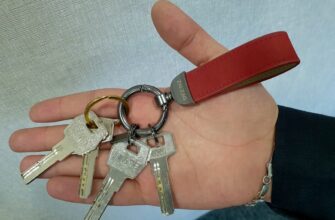- Introduction: Navigating Bitcoin Safely in a Digital World
- Understanding Bitcoin Security Fundamentals
- How to Buy Bitcoin Safely: 6-Step Protocol
- Step 1: Choose a Regulated Exchange
- Step 2: Fortify Your Account
- Step 3: Fund Your Account Securely
- Step 4: Execute Your Buy Order
- Step 5: Withdraw to Your Private Wallet
- Step 6: Choose and Set Up Your Wallet
- How to Sell Bitcoin Safely: 5 Protective Measures
- Step 1: Select Your Selling Venue
- Step 2: Transfer Bitcoin to the Platform
- Step 3: Set Your Sale Parameters
- Step 4: Withdraw Fiat Currency
- Step 5: Tax Compliance
- Top 5 Security Practices for All Transactions
- Bitcoin Safety FAQ
- Conclusion: Safety as Your Competitive Edge
Introduction: Navigating Bitcoin Safely in a Digital World
Bitcoin has revolutionized finance, but its digital nature demands heightened security awareness. Whether you’re a first-time buyer or seasoned trader, understanding how to buy and sell Bitcoin safely is non-negotiable. This guide delivers actionable steps to protect your investments from scams, hacks, and human error—because in crypto, security isn’t just an option; it’s the foundation.
Understanding Bitcoin Security Fundamentals
Before transacting, grasp these core principles:
- Non-reversible transactions: Bitcoin payments can’t be undone, making verification critical.
- Self-custody risks: Losing private keys means losing funds permanently.
- Regulatory compliance: Reputable platforms require identity verification (KYC) to prevent fraud.
How to Buy Bitcoin Safely: 6-Step Protocol
Step 1: Choose a Regulated Exchange
Select platforms with strong security credentials like Coinbase, Kraken, or Binance. Verify:
- Licensing in your jurisdiction
- Cold storage for customer funds (95%+ offline)
- Insurance against breaches
Step 2: Fortify Your Account
- Create a unique 12+ character password
- Enable two-factor authentication (2FA) via Authenticator apps—never SMS
- Set withdrawal address whitelisting
Step 3: Fund Your Account Securely
Use bank transfers (ACH) or debit cards. Avoid credit cards due to high fees and chargeback risks. Never share banking credentials outside the platform.
Step 4: Execute Your Buy Order
Start with market orders for simplicity. Use limit orders for precise pricing. Double-check amount and fees before confirming.
Step 5: Withdraw to Your Private Wallet
Critical step: Transfer Bitcoin from the exchange to your personal wallet immediately after purchase. Leaving coins on exchanges risks exposure to hacks.
Step 6: Choose and Set Up Your Wallet
- Hardware wallets (Ledger, Trezor): Best for long-term storage
- Mobile wallets (Blockstream Green): For smaller, accessible amounts
- Never share recovery phrases—store offline in multiple secure locations
How to Sell Bitcoin Safely: 5 Protective Measures
Step 1: Select Your Selling Venue
- Exchanges: Fastest option; use established platforms
- Peer-to-Peer (P2P): LocalBitcoins or Paxful—verify trader ratings meticulously
- Bitcoin ATMs: Only for urgent small sales; fees exceed 10%
Step 2: Transfer Bitcoin to the Platform
Triple-check the recipient address. Send a small test transaction first when using new platforms.
Step 3: Set Your Sale Parameters
For exchanges:
- Market orders for instant sales
- Limit orders to target specific prices
For P2P:
- Use escrow services
- Confirm payment receipt before releasing Bitcoin
Step 4: Withdraw Fiat Currency
Link a dedicated bank account beforehand. Withdraw immediately after sale completion to minimize platform exposure.
Step 5: Tax Compliance
Track all transactions. Most countries tax Bitcoin profits. Use tools like Koinly for automated reporting.
Top 5 Security Practices for All Transactions
- Phishing Defense: Never click email/SMS links. Manually type exchange URLs.
- Software Updates: Regularly update wallets and devices.
- Public Wi-Fi Ban: Only transact on secured private networks.
- Multi-Signature Wallets: Require 2+ approvals for transactions over $1,000.
- Scam Awareness: Reject “guaranteed returns” offers and fake support calls.
Bitcoin Safety FAQ
Q: What’s the safest wallet for beginners?
A: Start with a mobile wallet like Exodus or Trust Wallet for small amounts, then graduate to hardware wallets like Ledger Nano X for larger holdings.
Q: Can I reverse a Bitcoin transaction if scammed?
A: No. Blockchain transactions are immutable. Always verify addresses and recipients.
Q: How do I spot fake exchanges?
A: Check domain registration dates, look for HTTPS encryption, and search for user reviews on independent forums like Reddit.
Q: Is Bitcoin mining necessary for safe transactions?
A: No. Miners process transactions, but buyers/sellers don’t need to mine. Focus on secure trading practices instead.
Q: Should I use VPNs for Bitcoin transactions?
A: Only if accessing exchanges from restricted regions. Reputable platforms already use encryption.
Conclusion: Safety as Your Competitive Edge
Mastering Bitcoin security transforms risk into empowerment. By choosing regulated platforms, enforcing rigorous authentication, and maintaining self-custody, you turn volatility from a threat into opportunity. Remember: In crypto, the safest traders are the most profitable ones long-term. Start small, verify everything, and let security drive your financial freedom.








